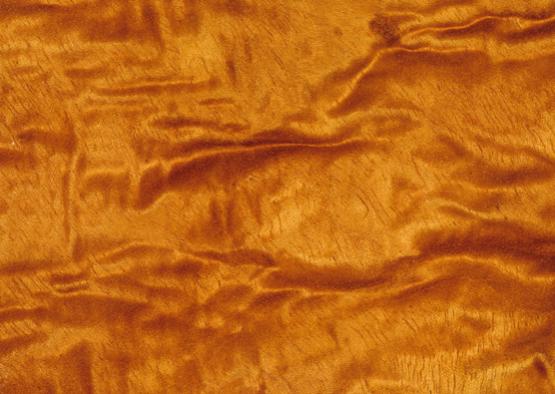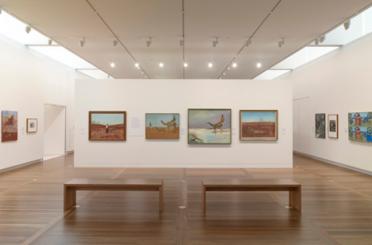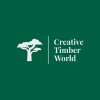Queensland maple is an Australian hardwood prized for its attractive wavy or curly grain, ideal for decorative furniture and musical applications.

The attractive Queensland maple has long been appreciated as a shade tree for Australian parks and gardens and also for its striking pink wood, which adorns many heritage homes and distinctive wood pieces. It flourishes in the northern Queensland rainforests between Townsville and the Windsor Tableland. With these areas now heritage protected, maple wood is harder to source, although it is still prized for use in furniture and fixtures.
The lustrous sheen of the pink to brownish pink heartwood makes for a distinctive tree. Historically, it was widely used for aeroplane propellers, coachwork, carriages, and boats. It was also popular for picture frames, and for musical instruments components such as guitar necks and piano parts.
Queensland maple is not susceptible to lyctid borer attack. Termites can be a challenge and there is also the threat of attack by an insect that calls this distinctive species home. The insect’s destruction to the living tree can leave areas of dark coloured soft tissue, giving dressed surfaces a dimpled appearance – a feature rarely seen in the pretty wood sought for furniture or high-value decorative uses. Such pieces are enhanced by a distinctive grain that is somewhat interlocked and often wavy or curly, but with a medium and uniform texture. On quarter sawn boards, the maple exhibits water wave, rib and birdseye figures.
The living maple does not record its age with growth rings. It appears as a medium-sized tree of up to 40 metres in height and 2.5 metres in stem diameter. The trunk is usually well formed, circular in cross-section and not buttressed. The bark, which is approximately 12mm thick, is grey to brown. It has fairly distinct longitudinal fissures. In older trees these fissures are not so marked owing to a tendency to scaliness. The maple has a medium durability.
Shrinkage
| Very Low | Low | Medium | High | Very High | |
|---|---|---|---|---|---|

|

|

|
|||
Tangential : |
7.20%
|
||||
Radial : |
2.90%
|
||||
Unit Movement Tangential: |
0.25%
|
||||
Unit Movement Radial: |
0.15%
|
Strength Group

Very High |
High |
Reasonably High |
Medium High |
Medium |
Reasonably Low |
Low |
Very Low |
||
Unseasoned: |
S1 |
S2 |
S3 |
S4 |
S5 |
S6 |
S7 |
S8 |
|
|---|---|---|---|---|---|---|---|---|---|
 |
|||||||||
Seasoned: |
SD1 |
SD2 |
SD3 |
SD4 |
SD5 |
SD6 |
SD7 |
SD8 |
|
 |
Stress Grade

| Structural No. 1 |
Structural No. 2 |
Structural No. 3 |
Structural No. 4 |
Structural No. 5 |
|
Unseasoned: |
F8 |
F7 |
F5 |
F4 |
|
Seasoned: |
F14 |
F11 |
F8 |
F7 |
F5 |
Density per Standard

Seasoned: |
560kg/m3
|
|---|---|
Unseasoned: |
660kg/m3
|
Joint Group

Very High |
High |
Reasonably High |
Medium |
Low |
Very Low |
|
Unseasoned: |
J1 |
J2 |
J3 |
J4 |
J5 |
J6 |
|---|---|---|---|---|---|---|
 |
||||||
Seasoned: |
JD1 |
JD2 |
JD3 |
JD4 |
JD5 |
JD6 |
 |
Colour

| White, yellow, pale straw to light brown | Pink to pink brown | Light to dark red | Brown, chocolate, mottled or streaky | |
 |
||||
Mechanical Properties
Modulus of Rupture - Unseasoned: |
|
|---|---|
Modulus of Rupture - Seasoned: |
77
|
Modulus of Elasticity - Unseasoned: |
|
Modulus of Elasticity - Seasoned: |
10
|
Maximum Crushing Strength - Unseasoned:  |
|
Maximum Crushing Strength - Seasoned: |
44
|
Impact - Unseasoned: |
|
Impact - Seasoned: |
11
|
Toughness - Unseasoned: |
|
Toughness - Seasoned: |
|
Hardness - Unseasoned: |
|
Hardness - Seasoned: |
4.7
|
Durability
| Low | Moderate | Reasonably High | High | |
| (0 - 5 yrs) | (5 - 15 yrs) | (15 - 25 yrs) | (more than 25 yrs) | |
In-Ground: |
 |
|||
| (0 - 7 yrs) | (7 - 15 yrs) | (15 - 40 yrs) | (More than 40 yrs) | |
Above ground: |
||||
| (0 - 20 yrs, usually < 5) | (21 - 40 yrs) | (41 - 64 yrs) | (More than 60 yrs) | |
Marine Borer Resistance: |
 |
Lyctid Borer Susceptibility: |
Not Susceptible |
|---|---|
Lyctid Borer Susceptibility - Other: |
|
Termite Resistance: |
Not Resistant
|
Fire Properties
| 1 - non-combustible | 2 - reasonably non-combustible | 3 - slightly combustible | 4 - combustible | |
Fire Properties Group |
Group Number - Other: |
3 if used on MDF or particleboard ≥12mm; veneer thickness 0.6-0.85mm
|
|---|---|
Average Specific Extinction Area: |
<250
|
Bushfire Resistance: |
Not Tested
|
A shade tree with striking pink wood, the Queensland maple’s pink to brownish pink heartwood makes for a distinctive appearance that finishes well. The narrow sapwood band is coloured white to pale grey. Its texture is medium and uniform with a variable grain, sometimes featuring interlocked, wavy or curly fibres.
The Queensland maple has a place in Australian history, having been used for general building framing around the early 1900s, and more commonly in flooring, lining mouldings and joinery. Maple has also featured prominently in light boat building for planking, decking, sawn frames, stringers, chines, gunwales and marine plywood.
Australia’s heritage and restored transport has been the destination for much maple, where it has been shaped into aeroplane propellers, coach, vehicle and carriages. It has also been prized for draughtsman’s implements, gunstocks, musical instruments and walking sticks. Today, it is used more commonly for distinctive furniture pieces, plywood, shop and office fixtures, joinery, turnery, carving, inlay work and picture frames.
Queensland maple wood is pleasant to work with, machining and turning well to a smooth surface. Pieces made from maple are often appreciated for their appearance, and will readily accept stain, polish and paint. It is easy to nail and glue but does tend to buckle, making it unsuitable for bending. No difficulty has been experienced with the use of standard fittings and fastenings and it can be satisfactorily bonded using standard procedures.

Portal Frames

Flooring
Allied Forest Products
Branch 95

Creative Timber World
Dekhar Outdoors
DTM Timber

Garde Timber Pty Ltd
Hammer Roo


